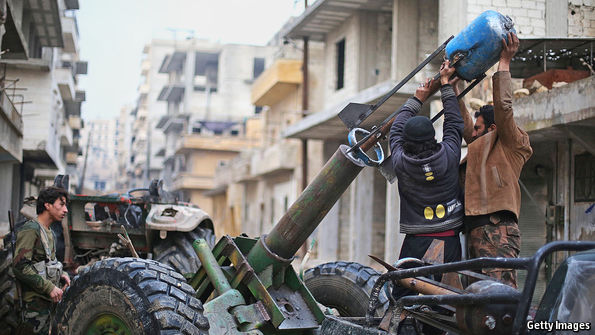Hell’s kitchens

THE “hell cannons” of Aleppo pack a deadly punch. Cobbled together in Syria by militant groups fighting to overthrow the autocratic regime of Bashar al-Assad, they use an explosive charge at the bottom of a pipe to hurl a propane cylinder crammed with 40kg or more of explosives and shrapnel. A finned tail welded to the cylinder shields it from the launch blast and provides stability in flight. The Ahrar al-Sham brigade reckon the cannons can hit targets 1.5km away. Fuses detonate the cylinder upon impact or, using a timer, after it punches into a building. This is all the better to demolish several floors with a single strike.
The use of improvised weapons in conflict has a long and bloody history: from the Irish shillelagh, a walking stick that doubles as a club—especially effective when the knob at the top is loaded with lead—to the Molotov cocktail, as the glass petrol bombs the Finnish army hurled at Russian tanks during the second world war came to be known.
The modern equivalents are more high-tech and, like Aleppo’s hell cannons, far deadlier. This comes from a combination of more sophisticated and easily available…Continue reading
Source: Economist




